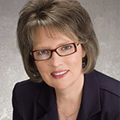Dear Dianne,
I’ve read many articles about overhead benchmarks, and I try to keep my total overhead within a range of 60% to 70%. When I look at the different overhead categories for my practice, the one that is always a little higher than what the experts say it should be is staff salaries, which usually run around 30%. I have great staff members who work hard every day. There are two doctors and five hygienists, three of whom are full-time. We also have three chairside assistants, three business assistants, and a sterilization/lab technician who can fill in if someone is absent. I do not feel that we are overstaffed. Most of the group has been with me for 10 years or more. Any thoughts?
Dr. M
Dear Dr. M,
As a practice owner, you are very aware of the importance of keeping overhead under control. Staff salaries are one of the “big three” overhead categories, along with dental supplies and laboratory. I’m sure you’re also aware of the importance of high-quality, well-trained staff members to help you run your practice smoothly and efficiently. Having worked with hundreds of practices through the years of almost every imaginable size—from solo doctor to multi-doctor/multi-site—one thing I have observed is that the larger the practice becomes, the more people it takes to make it run well.
Think of your practice like a pie. If the pie is large, then the individual pieces will be larger than an average pie.
There are several things that influence the salary portion of overhead, such as number of employees, collections, and what you include. My colleague, Allen Schiff, CFE, CPA, recommends 23%–28% for salary overhead. The portion is typically 7%–8% for business assistants, 7%–8% for chairside assistants, and 9%–10% for dental hygienists. When you add in two other overhead expenses related to salaries—payroll taxes at 1%–2% and staff benefits at 1%–2%—your salary overhead is not unreasonable. I urge you to compare your numbers against these percentages. One thing I have observed is that some offices keep hygiene fees artificially low. This causes the hygiene salary percentage of overhead to be skewed.
Maintaining balanced and current fees is the most important factor in keeping your overhead under control. Costs continue to rise, and the only way to keep up is to rebalance your fees at least yearly. Staff turnover is problematic in practices that do not give wage increases at appropriate times. Above-average doctors do above-average dentistry, hire above-average staff members, and pay above-average wages.
It is encouraging to hear you speak so glowingly about your staff. You obviously appreciate them and their efforts, otherwise you would not have such wonderful longevity. Showing appreciation to staff members in ways other than their paychecks is a great way to build staff loyalty. A good word from the boss is analogous to a coach who enthusiastically encourages his team. Positive reinforcement builds confidence and can make a huge difference in how a staff member approaches his or her work. Always praise in public and criticize in private.
I urge you to weigh the percentages for different staff departments. You may need to institute a fee increase if you notice a trend toward increasing overhead. If you feel you could benefit from an objective analysis of your numbers, I recommend you hire a CPA who has in-depth experience with dental practices. A good resource is the Academy of Dental CPAs at adcpa.org.
All the best,
Dianne
Dianne Glasscoe Watterson, MBA, RDH, is a consultant, speaker, and author. She helps good practices become better through practical analysis and teleconsulting. Visit her website at wattersonspeaks.com. For consulting or speaking inquiries, contact Watterson at [email protected] or call (336) 472-3515.
About the Author

Dianne Glasscoe Watterson, MBA
Speaker, author, and consultant
Dianne Glasscoe Watterson, MBA, is a consultant, speaker, and author. She helps good practices become better through practical on-site consulting. Visit Dianne's website at wattersonspeaks.com. For consulting or speaking inquiries, contact Dianne at [email protected] or call her at (336) 472-3515.
Updated April 29, 2016